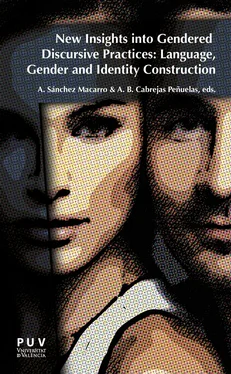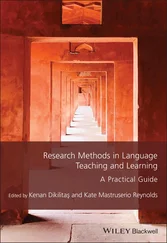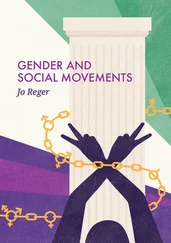Although the papers in this volume provide new directions and suggest new possibilities for the field of language and gender studies, they also stand firm in their recognition of the original feminist goals of the field in fighting sexism and promoting gender equality. Across a diverse set of contexts, the authors remind us of the central role of language in reproducing forms of sexism and exerting forms of power. The authors also demonstrate the innovative and creative ways in which women (including linguistic researchers) use language to promote human rights and challenge forms of inequality.
EDWARD R. BARRET
University of Kentucky
Introduction
The first paper I ever gave on the subject of gender and language outside the United Kingdom was at The University of Valencia in 2006. My paper on the gendered practices of women in leadership was delivered at IGALA4, the International Gender and Language Association’s fourth conference. This was a momentous occasion, not only for me personally, but because it was the first gender and language conference to be held outside America and Britain, and in many ways marked the first step towards internationalisation of this now flourishing field. In my view, the Valencia conference was the first in which a fruitful debate took place between gender and language researchers from English-speaking countries and their counterparts from Spain and other Mediterranean countries. Since then the field has gone global, with researchers from Africa, South America, Asia and the Middle East all working to one purpose: to critique and reveal hidden assumptions about gender and sexuality within discursive practices that continue to constrain the daily lives of both women and men.
It is easy to forget that gender and language is a relatively new subject area with a short history. Associated in the early 1970s with ‘second wave’ feminism, gender and language has now shifted its primary focus from the study of sexism and ‘differences between men and women’ to the discursive practices that produce gendered identities in general. Early research focused on two aspects: first, the presumed differences in how women and men used language, and secondly, how females and males were represented in language –as a code, as discourse, and in actual texts. Today, these quests appear more integrated in a postfeminist concern to explore how and why individuals’ identities are discursively constructed in gendered ways, and to critique the potentially constraining effects of such identities within different social contexts.
All the scholars in this volume embrace this social constructionist perspective of gender as relational, a process, something that is done, and a vital resource for constructing social roles and identities. According to this perspective, gender is a highly fluid and unstable social category, whereby constructs of masculinity and femininity are always negotiable and often competing. So, for instance, just as there are many inconsistencies and contradictions within any individual woman, there are always differences between women, governed by their age, class, sexuality, ethnicity, education, and so on. Gender is just one of many defining aspects of a person’s identity, and therefore not considered to be a macro-social category that always ‘behaves’ in predictable ways. Rather, gender is best identified and investigated within specific, local contexts or communities of practice (or CofPs), where it may emerge as relevant (or not) through detailed, micro-analysis of linguistic interactions. Arguably, this new focus on the context, complexity and fluidity of gender has depoliticised the category to a certain extent. Nonetheless, a consensus remains that gender is still highly pertinent to the way people interact through language, and to the way they are positioned and represented by gendered discursive practices. The authors in this volume focus upon identifying the linguistic markers that index gender within spoken, written and multi-modal texts by deploying ‘fit for purpose’ discourse analytical tools such as conversation analysis, critical discourse analysis and corpus linguistic analysis.
All the authors show that by grounding their analyses within highly specific contexts, they can pave the way for identifying wider, gendered discourses that circulate within broader cultural settings and can create exclusion and inequality. Their chapters provide fresh, critical insights about the ways in which our use of language constructs, reinforces and challenges gender identities that are approved by, and naturalised within hegemonic institutions such as the mass media, the internet and higher education. The papers in this volume move the field of language and gender forward by investigating the most up-to-date ways in which people today negotiate their sense of identity via the multi-modal resources of the mass and social media. The authors assess the ways in which digital interactions actively produce and sustain gendered identities in both the online and offline worlds. On the positive side, social networking forums such as Facebook or weblogs are shown to be a crucial resource by which young people negotiate their identities dynamically and thus maintain social relationships. However, less encouragingly, media artefacts such as female adolescent magazines naturalise gender-stereotypical identities and behaviours that continue to constrain women’s full participation in social and professional life. In the final two chapters on teacher education and classroom practice, the respective authors show that gender is still a salient category for understanding professional identity construction, but this moves away from the stereotypical profile often assigned to women.
Overall, this volume contributes new, postfeminist insights on identity construction to the field of gender and language. Each of the authors shows that people can proactively manage the discursive resources at their disposal in order to negotiate different versions of their gendered identity, some highly conventional, others more contesting, within specific contexts. While gender differences are identified in some of the chapters, these are viewed as resources that people may exploit to achieve strategic and relational goals. Finally, the volume reminds us that if we can deploy discourse analytical methods to reveal hidden assumptions about gendered identities, we can play an important role in making this world a better place to live as scholars and human beings.
JUDITH BAXTER
Aston University, UK
PART I
MEDIA DISCOURSE
1
Enforcing gender via directives in female adolescent magazines: a contrastive view in English and Spanish
MERCEDES DÍEZ PRADOS
Universidad de Alcalá
Abstract
Teenage magazines are discourse manifestations that can be considered sites for the construction of gender roles to naturalize certain behaviours and foster certain values, beliefs and norms of action. Thus, this type of publication can be used as a tool to enforce gender by certain discursive practices. The aim of the present study is to shed some light on how this engendering process is enforced in English and Spanish, to discover similarities or differences between the two. In order to do so, advice columns extracted from American and Spanish publications are analyzed to try to unveil the way magazine writers and young female teenagers interact. After a brief revision of previous research on teenage magazines as socialization devices, the analysis of the extracts selected is tackled. The main line of argument is that gender is enforced via directives in magazines written in both languages, particularly in the form of imperatives and fulfilling different speech acts (command, advice, suggestion, invitation, permission, prohibition and warning); as far as the type of behaviour reinforced is concerned, the values transmitted belong mainly to a traditional ideology in both cultures, although some differences are found regarding treatment of sexual desire in female adolescents, which is more naturalized in Spanish than in American magazines. All in all, magazines for female adolescents cannot be considered a stepping-stone to gender equality, since little progress has been made in the last two decades: the analysis reveals stagnation of topics and gender roles, when compared with previous studies.
Читать дальше












